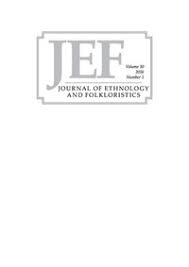An Introduction to the Sattra Culture of Assam: Belief, Change in Tradition and Current Entanglement
An Introduction to the Sattra Culture of Assam: Belief, Change in Tradition and Current Entanglement
Author(s): Baburam SAIKIASubject(s): Cultural history, Evaluation research, Sociology of Culture, 16th Century, History of Religion
Published by: Tartu Ülikool, Eesti Rahva Muuseum, Eesti Kirjandusmuuseum
Keywords: Sattra; Neo-Vaishnavism; tradition; belief; change; narrative;
Summary/Abstract: In 16th-century Assam, Srimanta Sankaradeva (1449–1568) introduced a movement known as eka sarana nama dharma – a religion devoted to one God (Vishnu or Krishna). The focus of the movement was to introduce a new form of Vaishnava doctrine, dedicated to the reformation of society and to the abolition of practices such as animal sacrifice, goddess worship, and discrimination based on caste or religion. A new institutional order was conceptualised by Sankaradeva at that time for the betterment of human wellbeing, which was given shape by his chief disciple Madhavadeva. This came to be known as Sattra, a monastery-like religious and socio-cultural institution. Several Sattras were established by the disciples of Sankaradeva following his demise. Even though all Sattras derive from the broad tradition of Sankaradeva’s ideology, there is nevertheless some theological segmentation among different sects, and the manner of performing rituals differs from Sattra to Sattra. In this paper, my aim is to discuss the origin and subsequent transformations of Sattra as an institution.
Journal: Journal of Ethnology and Folkloristics
- Issue Year: XII/2018
- Issue No: 2
- Page Range: 21-47
- Page Count: 27
- Language: English

